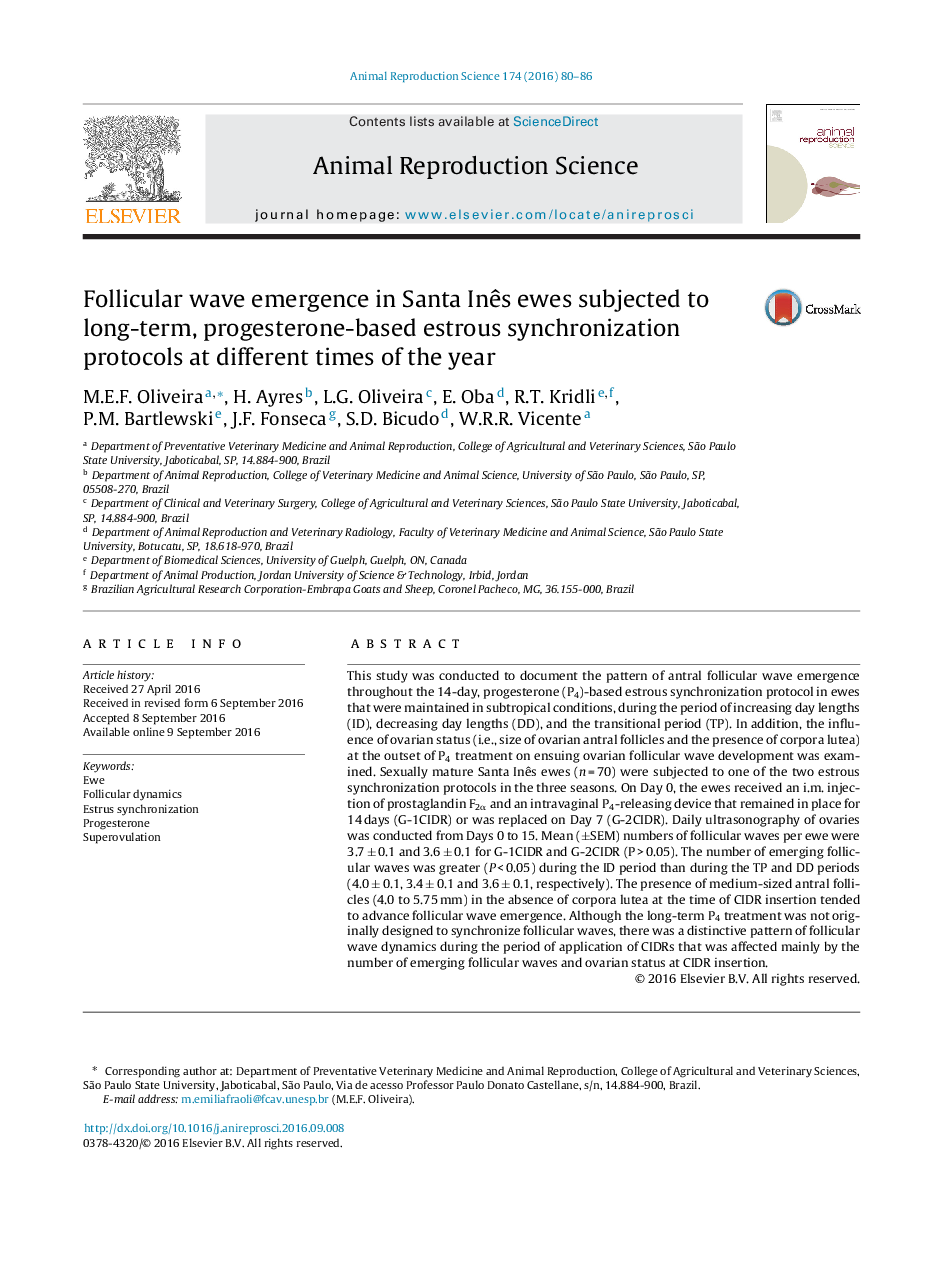| Article ID | Journal | Published Year | Pages | File Type |
|---|---|---|---|---|
| 5520364 | Animal Reproduction Science | 2016 | 7 Pages |
This study was conducted to document the pattern of antral follicular wave emergence throughout the 14-day, progesterone (P4)-based estrous synchronization protocol in ewes that were maintained in subtropical conditions, during the period of increasing day lengths (ID), decreasing day lengths (DD), and the transitional period (TP). In addition, the influence of ovarian status (i.e., size of ovarian antral follicles and the presence of corpora lutea) at the outset of P4 treatment on ensuing ovarian follicular wave development was examined. Sexually mature Santa Inês ewes (n = 70) were subjected to one of the two estrous synchronization protocols in the three seasons. On Day 0, the ewes received an i.m. injection of prostaglandin F2α and an intravaginal P4-releasing device that remained in place for 14 days (G-1CIDR) or was replaced on Day 7 (G-2CIDR). Daily ultrasonography of ovaries was conducted from Days 0 to 15. Mean (±SEM) numbers of follicular waves per ewe were 3.7 ± 0.1 and 3.6 ± 0.1 for G-1CIDR and G-2CIDR (P > 0.05). The number of emerging follicular waves was greater (P < 0.05) during the ID period than during the TP and DD periods (4.0 ± 0.1, 3.4 ± 0.1 and 3.6 ± 0.1, respectively). The presence of medium-sized antral follicles (4.0 to 5.75 mm) in the absence of corpora lutea at the time of CIDR insertion tended to advance follicular wave emergence. Although the long-term P4 treatment was not originally designed to synchronize follicular waves, there was a distinctive pattern of follicular wave dynamics during the period of application of CIDRs that was affected mainly by the number of emerging follicular waves and ovarian status at CIDR insertion.
